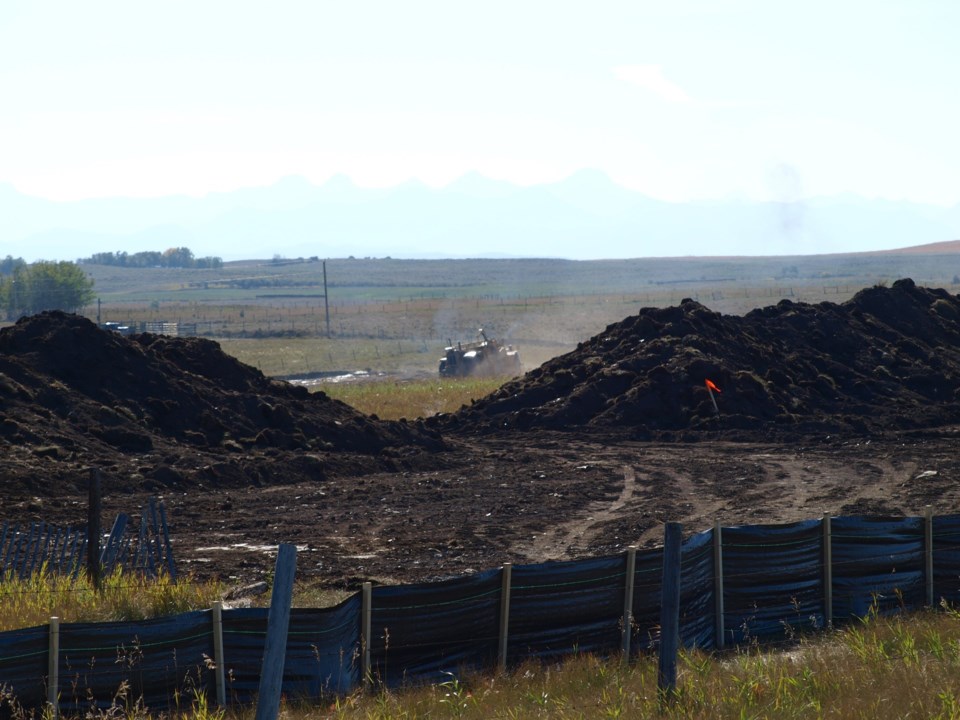At least a couple of things are becoming clear after a townhall meeting in Weedon on Jan. 10 regarding the controversial issue of gravel pit development in Rocky View County.
The purpose of the townhall was to gather public input into the work of a committee launched last year to draft guiding principles to be used by RVC staff to draft an aggregate resource plan (ARP) both citizens and industry can live with.
One thing that’s clear is the task is an arduous one. The numerous issues involved are so convoluted and complicated as to make designing a coherent (and fair) approval process for gravel development permits at best daunting, at worst, perhaps impossible.
Any new plan would aim to please gravel extractors, landowners and environmental groups simultaneously – a balance the County has proven unable to strike.
The other thing that’s becoming somewhat more understandable as the process unfolds is why the County essentially threw up their hands last year and voted to strike a new stakeholder-led advisory committee to pick up where the previous 2016 ARP had failed. The previous way of approving new pits (and defending the decisions) was no longer workable.
Debates over gravel pits often ended in stalemates, or decisions that left residents angry or frustrated.
Some attending the Weedon meeting had decades of experience with the County, the province and gravel companies, yet they expressed confusion and frustration with a system they still don’t understand.
Summary of concerns expressed by speakers at Weedon town hall (a partial list)
- Need expert input into the environmental inventory. Definitions need to be broad – wording should be expanded to make it a clear need to include wildlife corridors.
- Need language that supports/protects landowners. There’s no reason to support industry.
- Need to address loss of property value during the life of a pit’s operations – property values should be assessed before pits begin operations (and after) and gravel company should pay compensation for the loss.
- Dust is a real problem and RVC has done such a poor job in the past allowing pits to operate that there is no trust between the community and either the industry or the County.
- Residents need access to all technical information. Having easy to understand info is important but can’t be used to block access to details. It was suggested that the County should have staff available who can explain information to residents. It is important to have accessible information that permits residents to easily determine if a pit is in compliance.
Major recommendations from stakeholder committee to date (Note: draft only, also a partial list)
- That the County prepare a high level economic assessment of the economic impact of aggregate development.
- That the County access an up-to-date inventory of environmentally sensitive areas – including wildlife corridors.
- That the County accept its role as active regulator of aggregate operations.
- That there be provision for independent inspections and expert reviews of operator reports.
- That the County have a defined stakeholder engagement process for industry to follow.
- That the County consider the language and tone of the ARP. Current tone is supportive of industry – should be neutral, with objective information.
- That clear information be provided outlining the roles of the province and the County in aggregate applications, compliance, and enforcement.
The Bighill Creek Preservation Society (BCPS) has been lobbying the County and the province for some time to recognize the effects gravel pits have on groundwater that feeds the creek, and implement more stringent restrictions on operators, so far with little to no success.
They are actively participating in the townhalls.
“BCPS continues to be very concerned about the development of gravel mines which we believe will harm Big Hill Springs Provincial Park and Bighill Creek,” said BCPS vice-president Vivian Pharis.
“Negative impacts include pollution of the groundwater which sustains the park and creek, harm caused by fugitive noise and dust on the ecology of the park and the drainage and diminution of enjoyment of the more than 250,000 annual park visitors.”
Pharis said that by the end of 2024, three and potentially four pits will be in operation within one mile of the Park’s boundaries, with the potential for three more in the coming years.
“BCPS has posted on our website a map illustrating lands in surrounding Cochrane controlled by gravel interests,“ she added.
During the March 7 RVC meeting when the advisory committee idea was approved, Coun. Kevin Hanson acknowledged the history of how the County handled gravel extraction. The status quo was not viable.
“As part of that journey, we are going to get everybody back on board the bus. At some point, the bus left the station and industry wasn’t on it, and our residents weren’t on it. So we had a bus going to nowhere, basically.”
In outlining the reasons for that failure in the preamble to the deliberations, RVC planning manager Dominic Kazmierczak said a breakdown in trust between members of the former ARP advisory committee had aggravated the already intense discussions over a perceived – real or imagined – pro-industry bias in the previous consultation process.
He also suggested that council make provisions within the framework of the new ARP for proactive monitoring of any new aggregate mines to ensure they are in compliance with conditions set out in their development permits.
The stakeholder committee will now draft their report, which is scheduled to be presented to RVC council by early-mid March. Guided by the report, RVC staff will then draft a new Aggregate Resource Plan.




